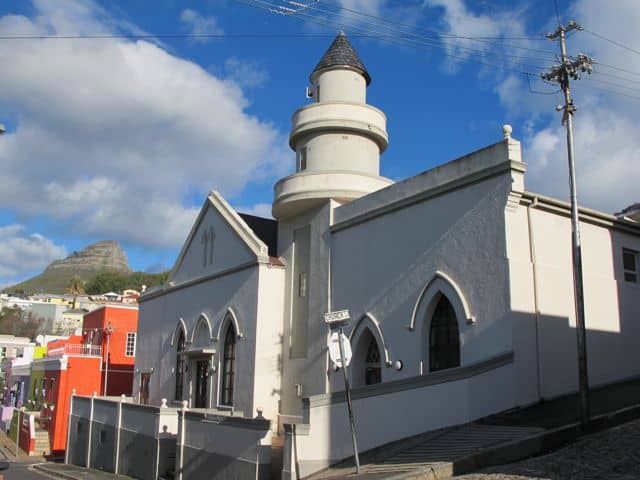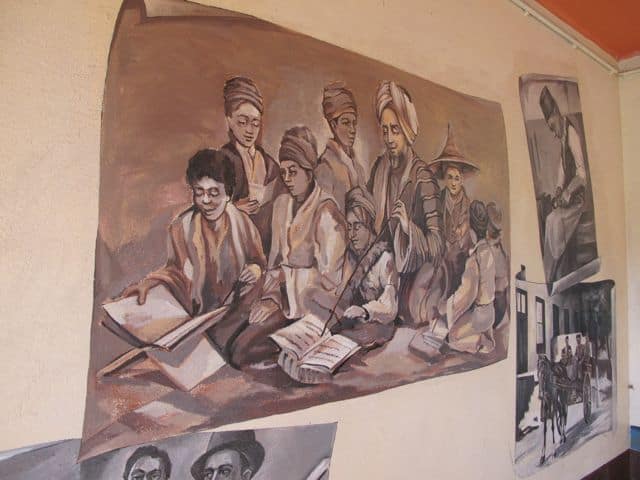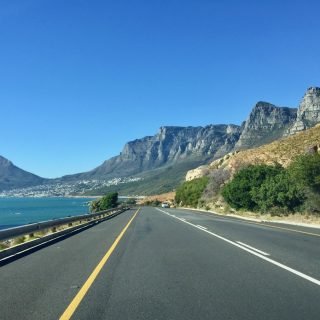The Bo Kaap neighbourhood in Cape Town is a historic enclave that graces the slopes of Signal Hill. The first thing anyone will notice during a Bo Kaap tour are the gorgeous, brightly-coloured houses lining steep cobbled streets. The second thing: the faint scent of spices such as cardamom and cloves in the air. Bo Kaap is the home of the Cape Malays, a predominantly Muslim community, who were brought to the Cape in the 16th and 17th centuries by the Dutch from parts of Eastern Africa and as far as present-day Malaysia and Indonesia. They brought with them their religion, culture and cuisine. These days, there are still traces of the Malay language in the local dialect, like “trim-makasi”. Meaning ‘thank you’, Malaysians and Indonesians pronounce it as “terima kasih”.


A walking tour of Bo Kaap
A great way to experience Cape Town‘s Bo Kaap neighbourhood is to join a walking and cooking tour by Andulela, a local tour operator that specialises in authentic South African experiences. We met our guide at the footsteps of the Bo Kaap Museum. This small museum provides a wonderful overview of Bo Kaap’s colourful history.



South Africa’s oldest mosque
From there, we criss-crossed the neighbourhood, passing several mosques including the Auwal Mosque – built in the 18th century, it is South Africa’s oldest mosque – and Shafee Mosque. We stopped by beautiful murals depicting Cape Malay life and customs in the 19th century, little vegetable gardens and cafés serving typical Cape Malay dishes. It was a gorgeous sunny day and the vivid colours of the neighbourhood looked incredibly cheery!



Read about things to do in Cape Town
The cloud & the legend of Van Hunk
As we made our way around the neighbourhood, we were treated to beautiful views of Table Mountain and the adjacent Devil’s Peak. I stopped to look at a strange cloud formation above Devil’s Peak. Our guide noticed my gaze and almost whispered, “They’re smoking.”

I asked him about it and he told us about the legend of Van Hunk, a Dutch pirate who used to live at the foot of the mountain. Van Hunk would seek the same spot on the mountain every day to smoke his pipe. Legend has it that a stranger approached him one day and they soon discovered that they both loved to smoke. Van Hunk challenged his friend to see who could smoke the longest. Van Hunk won the contest and his new friend was livid. In his state of anger, he removed his disguise – he turned out to be the Devil himself – and sent a bolt of thunder crashing onto the mountain. Both men disappeared. These days, when the cloud appears above Devil’s Peak, locals say that the Devil and Van Hunk are at it again!
Read about the spectacular road trip around the Cape Peninsula and my recommended road trips from Cape Town
A Cape Malay cooking course with Faldila
The walking tour ended at the Atlas Trading Company, a specialty shop that sells all sorts of spices and herbs. It reminded me of the shops in my neighbourhood in Kuala Lumpur when I was a kid. The spicy scents triggered a slew of wonderful childhood memories! Our guide explained in which dishes the various spices were typically used – everything smelled so amazing – and made us memorise the Cape Malay names of the spices!

Cooking with Faldila
From there, we walked up the hill to a small house where we were met by the lovely Faldila. Faldila took us by the hand and led us into her home. Before we knew it, we were in the midst of a delightful Cape Malay cooking course! We kneaded and smacked the dough for the roti (pancake-like bread), mixed spices for the curries, and folded samosas and stuffed them with a spicy filling. Faldila kept us on our toes, quizzing us on our knowledge of the spices and their Cape Malays names.






It was a fantastic experience. I had a bit of a chuckle when it dawned on me that I’d eaten rotis and samosas all my life (they’re just as commonplace in Malaysia) but here I was, in a little kitchen in Cape Town learning how to make them for the very first time!
Steeped in history and home to a unique heritage, Bo Kaap is one corner of Cape Town that shouldn’t be missed. I highly recommend joining this walking tour and cooking class for great insights into the Cape Malay community, and simply because it’s great fun!
Read about my helicopter tour of Cape Town
Booking.com
Note: a big thank you goes to Cape Town Tourism for your fabulous hospitality. As always, all views expressed above are mine.












[…] Stroll through the colourful Malay neighbourhood of Bo Kaap. This historic neighbourhood is still home to many Malays and has been lovingly restored. The vivid […]
The view alone is awesome. Plus that cooking experience, looks like Bo Kaap is one good place to visit.
Those samosa were indeed divine! Best part was: WE MADE THEM ourselves! 🙂 What a kick! 🙂
Hi Yolanda,
Glad it brought back great memories. It definitely was a highlight of my Cape Town trip! 🙂 She was hilarious!
I would love a coffee in Amsterdam with you. Will email you.
Cheers,
Keith
Wow, how much I recognize reading your post and see your pics. I had the same cooking lessons even of the same lady! Isn’t she a great personality? It certainly brings back memories.
What about a cup of coffee in Amsterdam to exchange experiences?
Those samosas are looking divine. Looks like a beautiful place!
How come I missed this when I was in Cape Town? AMAZINGNESS!!!!!
Hey Janice,
Bet you’ll love Bo Kaap! Put it on your list. 🙂
Cheers,
Keith
Mmmm. Samosas, roti – Bo Kaap looks like a fun little corner of Cape Town.
Very colorful, reminds me of those colorful shacks in Brazil, don’t remember what they’re called. But this area looks much cleaner.
As always, stunning photos and a great review – thanks!